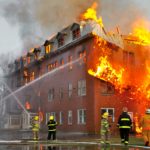Would I Make a Good Firefighter?
Firefighters control and put out fires and respond to emergencies where life, property, or the environment is at risk. Their work on scene is dangerous. When not on the scene of an emergency, firefighters remain on call at fire stations, where they sleep, eat, and perform other duties during shifts that often last 24 hours. Many work more than 40 hours per week.
They typically need a high school diploma and training in emergency medical services, but most receive training at a fire academy, pass a written and physical tests, complete a series of interviews, and hold an emergency medical technician (EMT) certification.
The median annual wage for firefighters was $49,620 in May 2018. Employment is expected to grow 5 percent from 2018 to 2028, about as fast as the average for all occupations. Physically fit applicants with paramedic training will have the best job prospects.
Do I have what it takes to fight fires?
Tasks
- Search burning buildings to locate fire victims.
- Rescue victims from burning buildings, accident sites, and water hazards.
- Administer first aid and cardiopulmonary resuscitation to injured persons.
- Dress with equipment such as fire-resistant clothing and breathing apparatus.
- Assess fires and situations and report conditions to superiors to receive instructions, using two-way radios.
Technology Skills
- Data base user interface and query software — Affiliated Computer Services ACS FIREHOUSE; Fire incident reporting systems; Microsoft Access

- Electronic mail software — Email software
- Office suite software — Corel WordPerfect Office Suite; Microsoft Office

- Operating system software — Microsoft Windows

- Spreadsheet software — Microsoft Excel

![]() Hot Technology — a technology requirement frequently included in employer job postings.
Hot Technology — a technology requirement frequently included in employer job postings.
Knowledge
- Public Safety and Security — Knowledge of relevant equipment, policies, procedures, and strategies to promote effective local, state, or national security operations for the protection of people, data, property, and institutions.
- Customer and Personal Service — Knowledge of principles and processes for providing customer and personal services. This includes customer needs assessment, meeting quality standards for services, and evaluation of customer satisfaction.
- Education and Training — Knowledge of principles and methods for curriculum and training design, teaching and instruction for individuals and groups, and the measurement of training effects.
- Building and Construction — Knowledge of materials, methods, and the tools involved in the construction or repair of houses, buildings, or other structures such as highways and roads.
- English Language — Knowledge of the structure and content of the English language including the meaning and spelling of words, rules of composition, and grammar.
Skills
- Active Listening — Giving full attention to what other people are saying, taking time to understand the points being made, asking questions as appropriate, and not interrupting at inappropriate times.
- Critical Thinking — Using logic and reasoning to identify the strengths and weaknesses of alternative solutions, conclusions or approaches to problems.
- Monitoring — Monitoring/Assessing performance of yourself, other individuals, or organizations to make improvements or take corrective action.
- Operation and Control — Controlling operations of equipment or systems.
- Operation Monitoring — Watching gauges, dials, or other indicators to make sure a machine is working properly.
Abilities
- Static Strength — The ability to exert maximum muscle force to lift, push, pull, or carry objects.
- Problem Sensitivity — The ability to tell when something is wrong or is likely to go wrong. It does not involve solving the problem, only recognizing there is a problem.
- Arm-Hand Steadiness — The ability to keep your hand and arm steady while moving your arm or while holding your arm and hand in one position.
- Multilimb Coordination — The ability to coordinate two or more limbs (for example, two arms, two legs, or one leg and one arm) while sitting, standing, or lying down. It does not involve performing the activities while the whole body is in motion.
- Oral Comprehension — The ability to listen to and understand information and ideas presented through spoken words and sentences.
Work Activities
- Inspecting Equipment, Structures, or Material — Inspecting equipment, structures, or materials to identify the cause of errors or other problems or defects.
- Assisting and Caring for Others — Providing personal assistance, medical attention, emotional support, or other personal care to others such as coworkers, customers, or patients.
- Operating Vehicles, Mechanized Devices, or Equipment — Running, maneuvering, navigating, or driving vehicles or mechanized equipment, such as forklifts, passenger vehicles, aircraft, or water craft.
- Making Decisions and Solving Problems — Analyzing information and evaluating results to choose the best solution and solve problems.
- Performing General Physical Activities — Performing physical activities that require considerable use of your arms and legs and moving your whole body, such as climbing, lifting, balancing, walking, stooping, and handling of materials.

